In Houston, Listening to What Workers Want


From Day One’s conference at the Asia Society in Houston brought together more than 200 leading thinkers and top executives in HR, CSR, talent, diversity, employee engagement, and benefits for an engaging, up-to-the-minute conversation about how employers can build stronger bonds of trust and connection with their workers and their communities. The urgent topics at the February conference included the importance of offering career paths, developing diversity in leadership, balancing productivity with well-being, supporting working parents, and encouraging employees in community work. Highlights from the event:
The Major-League Clout of High-Profile Brands to Have Social Impact
Paula Harris has often been the only African American person or the only woman in her workplace. As SVP of community affairs for the Houston Astros major-league baseball (MLB) team and executive director of the Astros Foundation, she is determined to work toward a time in which such scenarios are rare or nonexistent. “I think this next generation of employees are looking for employers where they don’t want to be the first. It should be part of the culture where you see diversity, diverse ideas, diverse people, diversity in their clients and everywhere else,” Harris said in a fireside chat to kick off the conference. Harris talked about her experience of moving past the empty corporate rhetoric of the past to today’s newly prominent needs.
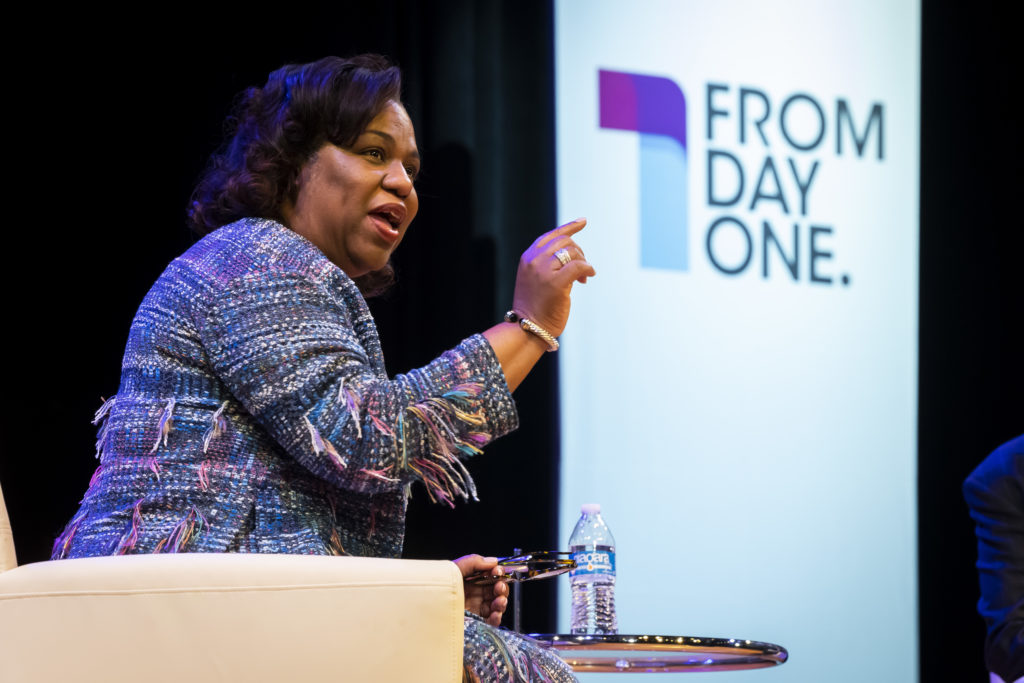
“People can tell when it’s just for show, or when you just spam out numbers,” she said. “The demands are greater and greater now, [and it’s] not to say that change isn’t happening fast enough, but to say that there’s a new awareness about what’s really going on. And we’ve seen what’s happening with corporate boards, and corporate boards haven’t been made to diversify.”
Harris described what the Astros Foundation is doing specifically to improve on this front, including partnering with the HBCU institution Texas Southern University, to which the Astros Foundation is giving a $500,000 grant. The Astros Foundation is also collaborating with students in sports management and STEM subjects (including some who have been affected by domestic violence) through scholarships and fellowships that allow them to work with the baseball team, as well as engage in volunteer projects involving the team and foundation.
These initiatives have admittedly been challenging amid the Covid-19 pandemic. “After Covid, it’s been tough to get people back reinvesting or bringing baseball back into the inner city, and [reviving] baseball in the inner city is a big focus of MLB,” Harris said. “But we really wanted to have kids come back to baseball because we have seen [the decline in numbers] of inner-city kids playing baseball and not as many African American Major League Baseball players, and it’s an investment in time and money.”
How High-Performing Workplaces Can Show Compassion, Too
Those investments were at the forefront during the ensuing panel discussion, titled “How High-Performing Workplaces Can Show Compassion, Too,” which highlighted how a competitive, innovative business can remain productive even while its employee engagement and retention depend on empathy and compassion–particularly when workers are expected to take certain risks and deliver maximum effort. Leaders and managers can model the importance of flexibility in remote-work situations in order to set the tone for a reasonable work-life harmony throughout their organizations, such as being open about when they’re going to be out of the office, be it for vacation or to spend valuable time with children.
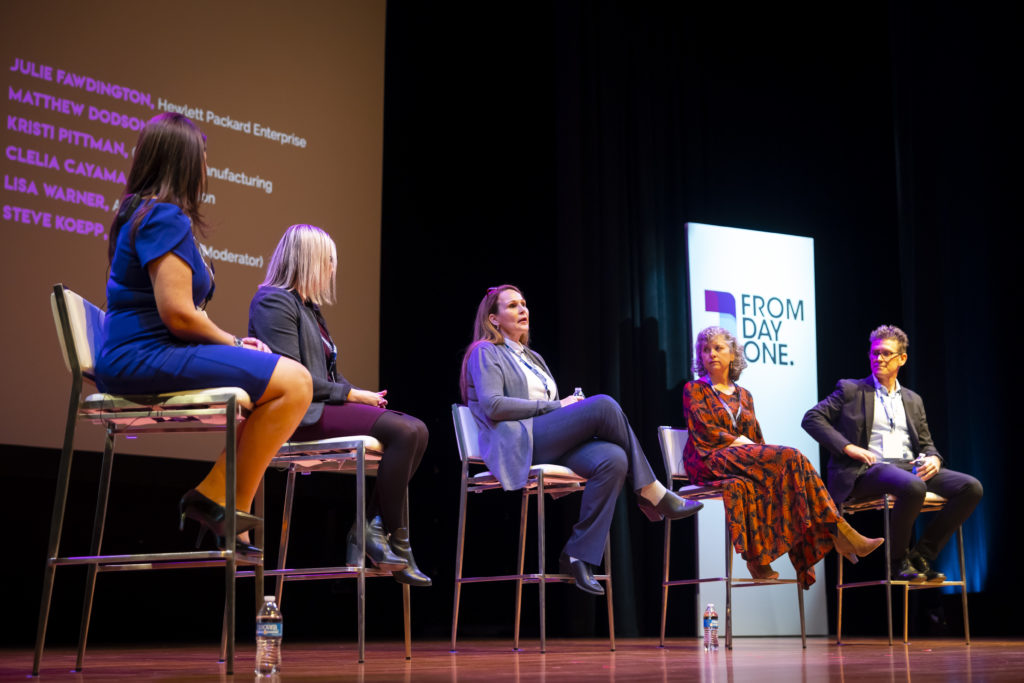
“Dialogue is so essential, and these are the things that we need to talk about. We need to talk about what the expectations are about communication,” said Lisa Warner, president of AMP Creative, a producer of corporate learning experiences. “Give permission from the outset to be transparent, to be candid, and show that we’re doing that.” Matthew Dodson, an organizational development leader at Chevron, highlighted the additional considerations that need to be taken when it comes to international teams, such as scheduling meetings and thinking about the time zones for everyone participating. “It’s just another way to think about the big world and people, [where] someone’s going to have to pay some type of sacrifice when you’re a global team,” Dodson said.
Finally, Warner highlighted webinars AMP had created to help people navigate stressors that the pandemic has brought on for both employees and employers. AMP’s new employee resources also include mental-health counseling services and an on-site primary care clinic. “Having that understanding, I think, helps people process their way of understanding their own emotional landscape, and then understanding the landscape of others,” she said. “So, perspective-taking is kind of where we start. We start by imagining what it might be like to be in someone else's shoes.”
Additional speakers included Julie Fawdington, head of operations for the data office of Hewlett Packard Enterprise, Kristi Pittman, VP of HR at Goodman Manufacturing, and Clelia Cayama Soto, VP of HR at Aegion, a construction and engineering company.
How to Simulate Career Progressions as a Retention Tool
Empathizing with the goals and experiences of employees can serve managers well too, a reality on full display during a thought-leadership spotlight titled “How to Simulate Career Progressions as a Retention Tool,” presented by Vijay Swaminathan, CEO of Draup, an AI-driven, decision-making platform. Swaminathan asserted that by understanding the trends affecting a company’s market ecosystem, businesses can develop prospective career progressions for employees to gain valuable insights into workforce-planning needs.
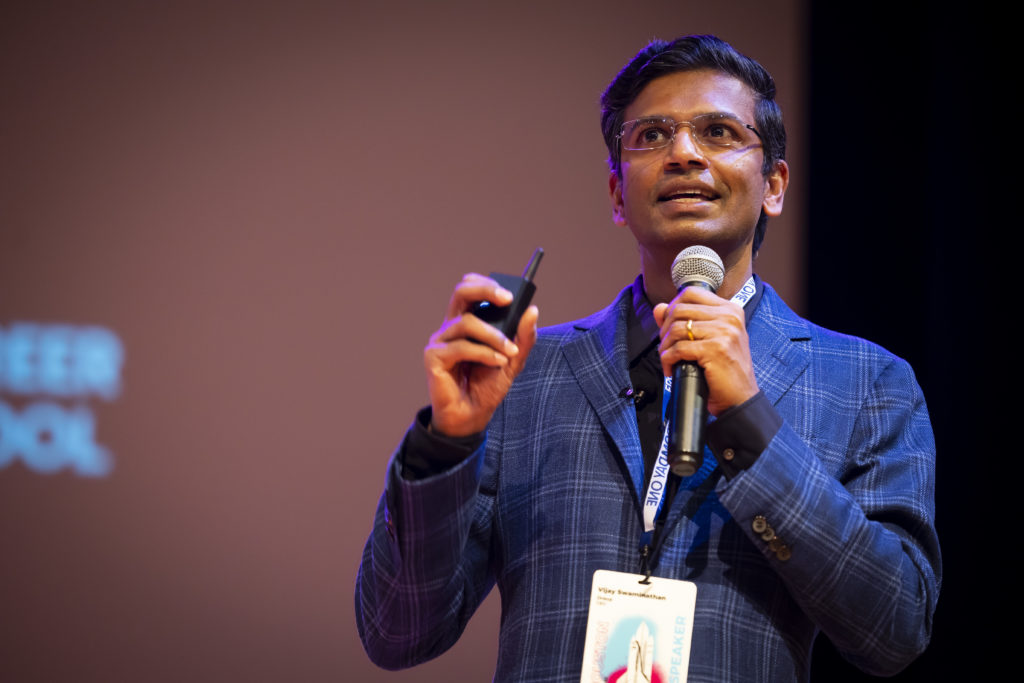
Given the digital transformation that virtually every industry is currently going through, Swaminathan highlighted how companies can effectively use career progression as an attractive retention tool to ease the burden of recruitment. “If you understand this layer, it actually takes you to a more skill-level view of the world,” he said. “Our prediction is that in the next two to three years, we [will] largely migrate toward a skill-based economy rather than a job role, or job-family-based type of a hierarchy.”
Certifications for largely digitally based programs typically take months, whereas companies are still asking for years of experience when looking for new hires. Swaminathan noted that companies should not overlook candidates holding two-year degrees in higher education, vs. four-year degrees.
“Today, the entry point could be through an associate degree, or it could be through a bachelor’s degree from a university, and we cannot ignore the community college [degree] that is turning out fantastic,” he said. “With digital and technology talent, the challenge is that we don’t create enough jobs at an entry-level for those professionals, and then over time, we have a pipeline problem.” The pandemic has shown employers the importance of mapping out skills and prioritizing soft or behavioral skills as much as technical skills, with a focus on having empathy for coworkers and maintaining a good communication framework.
Managing a Healthy Workplace in a Hybrid Environment
Empathy and healthy communication are integral to a positive workplace culture. In a panel titled “Managing a Healthy Workplace in a Hybrid Environment,” the expert speakers discussed how a hybrid or remote workplace marked by uncertainty and lack of boundaries requires extra vigilance concerning the health and well-being of workers. Core ideas like flexibility, the idea that employees’ concerns are heard, and the opportunity for self-growth and development are critical. Leaders can also boost morale and productivity when they show they care–and respond with empathetic and effective solutions to the issues their employees face.
“What we see as a healthy work environment today may be different two years from now, and so we need to make sure that we are continually assessing what that looks like and listening to our employees,” said Andrea Alexander, chief people officer at Rent the Runway. Lucho Vizcardo, head of international HR for the western hemisphere at Nabors Industries, and oil-and-gas drilling company, added: “What we knew two years ago where we were all learning from this, in addition to flexibility, will kind of combine into adaptability.”
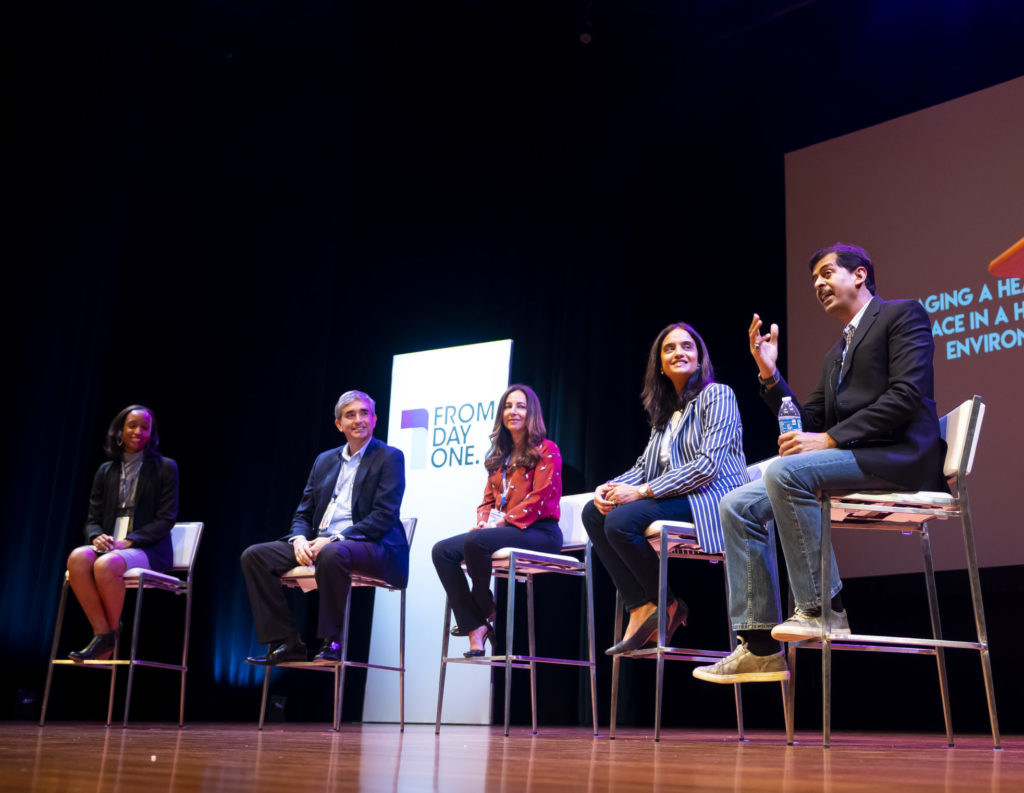
Alexander spoke to challenges specific to Rent the Runway when it came to promoting flexibility and how the seemingly ideal or preferred solution may not actually be ideal for everyone, as some people may prefer being in an office or other workplace to being at home. Emphasizing the ongoing value of adaptation, she remarked, “One of the challenges that we really faced was, how do you make sure that you are providing flexibility, but you’re also thinking about all of your employees and understanding the inequities that may be created, as it’s easier for some corporate workers to be virtual.” Alexander concluded, “We are leaving a lot up to the employee.”
The pandemic has taught us that in-person meetings tend to go longer when people socialize about their personal lives and interests, whereas with video calls, people are more likely to stick to a planned agenda so they can go about their day, noted Shashank Bhushan, chief talent-development architect at BMC Software. Socialization is a big part of the sense of belonging many employees seek from their jobs, and plays a role in mental health, as well. We’ve also learned over the past two years that employers need to go above and beyond in providing mental-health resources that employees will not hesitate to utilize. For example, many employees might be more inclined to seek out teletherapy than an in-office psychotherapist because they may feel it’s more convenient and private.
Ultimately, panelists agreed that employers must continue to be flexible and listen to their employees as workplace environments continue to evolve. “We need to be flexible in our own thinking about how to deal with situations. Nobody predicted this pandemic and how this is going to play out; we can’t even predict when it’s going to end, which means that we have to be constantly thinking on our feet,” Bhushan said. “Be vigilant about what’s happening around us and then take every day the way it is and resist the temptation to crystal-gaze too much into the future, because that only brings in more disappointments at some point.”
Additional panelists included Roma Desai, VP of HR International at MAN Energy Solutions, and Christine Morehead, chief people officer at One Medical.
Three Key Leadership Trends for 2022
There are instances, however, in which foresight is advantageous, as evidenced in the thought leadership spotlight, “Three Key Leadership Trends for 2022.” The workforce is going through unprecedented changes, and new challenges are emerging for companies and leaders to ensure a successful talent pipeline into the future. April King, senior consultant at the leadership-development consultancy DDI, analyzed what the firm’s research says are the top leadership trends for 2022 that have emerged in these changing times, and what employers can do to respond and make the most of them.
These are developments that leaders can’t ignore, since they need to prepare to take on challenges and find top talent in a faster, more tumultuous, and increasingly digital future. King kicked off the session highlighting three trends from the Global Leadership Forecast: the race for top talent, finding potential in the virtual shadows in hybrid-workplace scenarios, and how to engage the next generation of leadership.
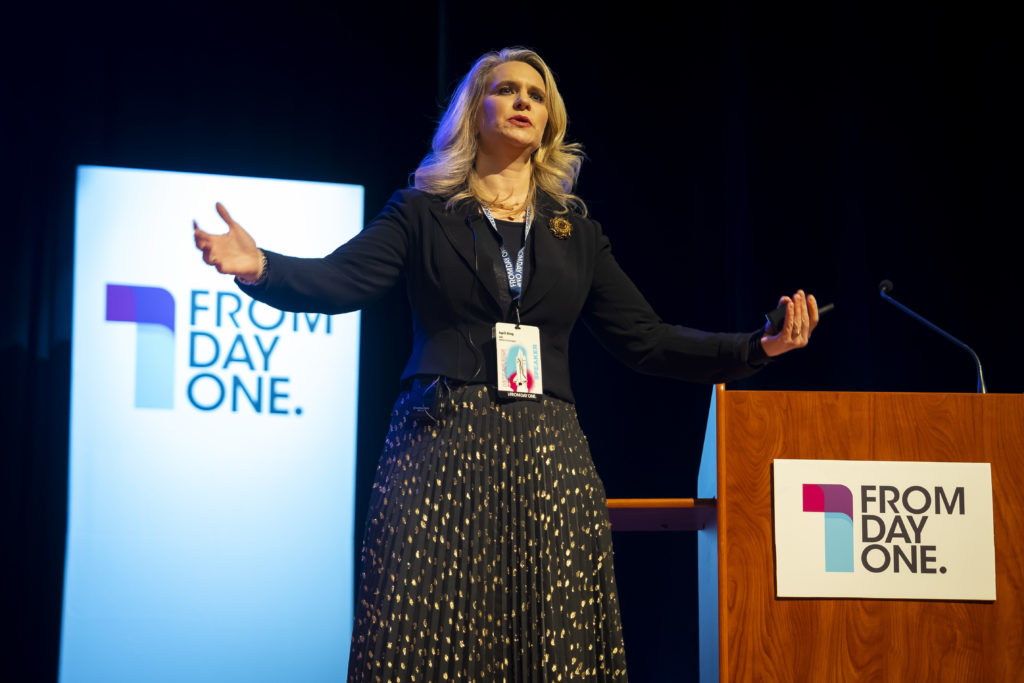
For the first point, she emphasized how burnout is fueling attrition, and that instilling a sense of purpose and supporting leadership capabilities are ways to retain employees. “There is significant research that’s going on right now in terms of how burnout is posing that major retention risk, and how it’s important for us as leaders to pay attention to that,” King said.
Regarding finding potential lurking in the virtual shadows, she noted that part of the challenge is that physical visibility does not exist as much as it used to in the past. King noted how objective observation of what’s happening is a real challenge when employees are working remotely, which can also impact the ability to engage new and emerging leadership candidates.
“In that hybrid work environment, we know outcomes are important [as well as] having objectives, having key metrics in terms of measuring performance, but we know there’s so much more that people bring to the table,” she said. “The idea here is for leaders to think about how they get observational data and a real understanding of what their teams are doing on a day-to-day basis.”
“And as for engaging next-gen leaders,” she said, “your future leaders are demanding more coaching and feedback, and seek an authentic workplace that truly embraces empathy and inclusion.”
Is Your Company Developing an Inclusive Culture?
Collaboration was a key theme of the following panel, titled “Is Your Company Developing an Inclusive Culture?” The conversation highlighted that, instead of looking for a “culture fit” in new employees, companies can make their workplace better-suited to include diversity. Among the highlights: the key elements that make an employer welcoming to a diverse labor pool, from personalized benefits to a sense of belonging, and how career growth and employee retention significantly add to a company’s reputation for inclusion.
Pedro Neiva Botelho, head of HR for the Americas for Schlumberger, highlighted how one of the available avenues for growth surrounding inclusion is looking at key local factors, including ethnicity. Moderator Lan Ni, a professor of communication at the University of Houston, pointed out that inclusion also involves psychological safety, which includes having a sense of belonging and being able to bring your authentic self to work.
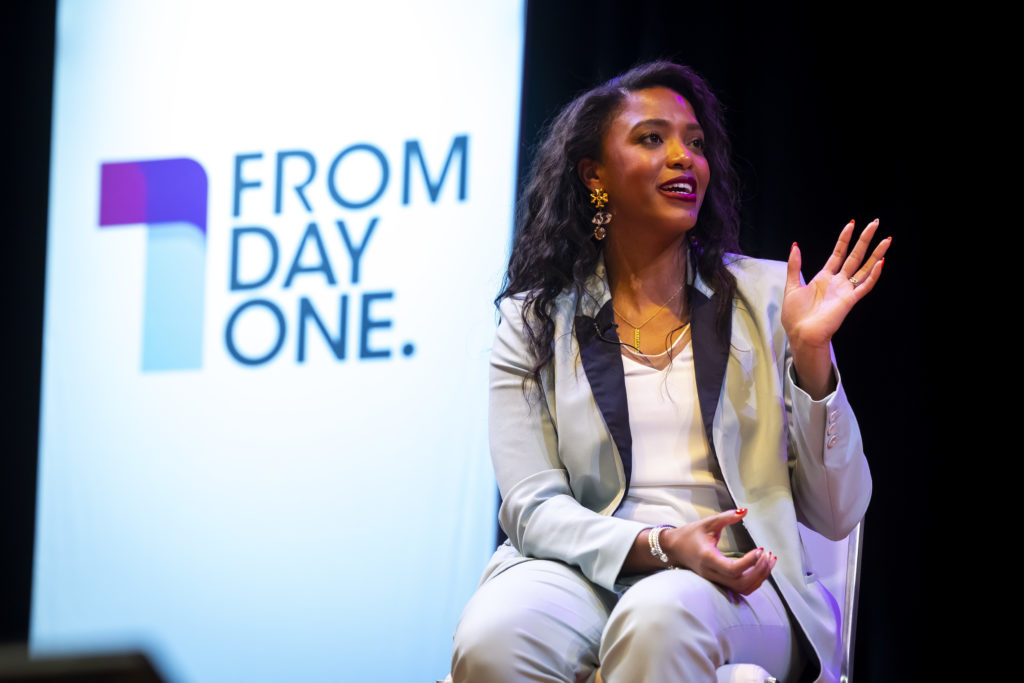
Agnes Denise Malloy, global VP of diversity and inclusion at Johnson Controls, used the following metaphor to demonstrate the differences between diversity, equity, and inclusion (DEI) in the workplace: “If we brought in a ton of shoes, and we passed them out to everybody, diversity is that you got a variety of shoes, inclusion means everybody got a pair of shoes, and equity means everybody got the right-size shoes,” she explained. “So, it’s meeting people where they’re at for their own individual needs, but having policies, practices and procedures to make sure that it is thoughtful and inclusive of everybody’s personal needs.”
“People need to feel valued in the workplace, they need to be seen and they need to be heard,” added Victor Wright, director of Global Labor and Employment Law at KBR, the global contracting and technology company. “A lot of things where companies can go wrong is the lack of dignity and respect and how people feel valued in the workplace, if they have a voice, or if they feel marginalized.”
Tiana Carter, senior director of culture and social impact for Waste Management (WM), explained why companies need to look ahead toward the next 10 years when it comes to prioritizing their company’s culture and employee retention. “When you think about the next generation of talent and their expectations, 25% of our workforce by 2025 is going to be Gen Z, and they are not going to accept similar things that prior generations accepted in the workplace. They are willing to forego a company for purpose over profits at any given point,” Carter said. “You need to go out and find talent that are culture adds, because you need to be adding to your organization to help you build and grow to the organization you want to become. You have to start planting those seeds today, [because otherwise], quite frankly, it’s going to be very challenging for corporations to have the workforce they need to succeed in business.”
Botelho added that it’s important to recognize that the responsibility of creating an inclusive environment shouldn’t fall on the employees, but rather the company’s ecosystem, with HR and talent management as key players. “The ecosystem needs to be inclusive, and we need to drive the diversity aspects of it,” he said. “But we need to embed it into our practices.”
Additional panelists included Rachelle Davis, SVP of talent at the management-consulting firm RGP.
Don't Forget About Recruiters! How Automation Can Help
The thought leadership spotlight titled, “Don't Forget About Recruiters! How Automation Can Help Retain Your Recruiters During the Great Resignation,” described another source of talent not to be overlooked. Statistics show that one in three recruiters is currently looking for a new job, and experts believe internal recruiting teams need to be at the forefront of retention strategies. Jason Scheckner, chief revenue officer at HiredScore, which uses artificial intelligence for hiring, demonstrated how technology can unlock recruiter retention and satisfaction while making progress towards corporate goals.
Recruiting has been a beleaguered field amid the pandemic and the onslaught of people seeking new jobs. Scheckner covered some of the key challenges recruiters and recruiting companies have faced, including the backlog of pandemic and market shifts, increased burnout, and an ever-changing regulatory environment with fluctuating laws regarding treatment and the disclosure of information. Additionally, some companies are still struggling to strike the right balance between having the autonomy to meet DEI goals and meeting hiring managers’ demands about candidate experience to fill a role.
Despite these challenges, Scheckner made clear that demand is at an all-time high for recruiters by showcasing 16,000 new recruiting jobs posted on LinkedIn within 24 hours of his session. Furthermore, since one in three recruiters are looking for new jobs, those searching have an abundance of opportunities to choose from.
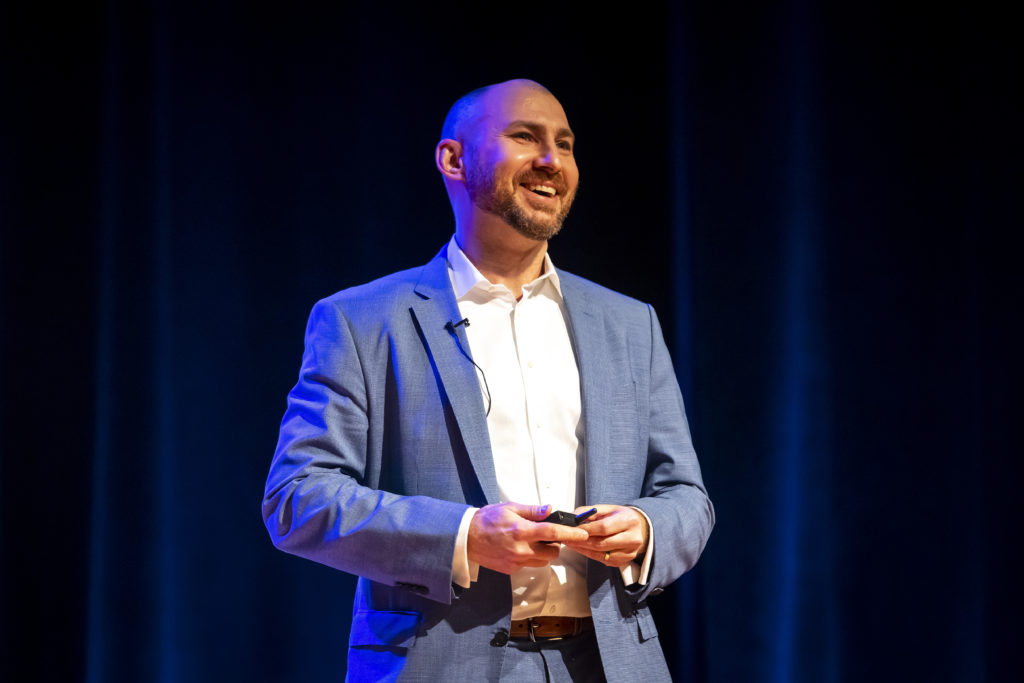
“[This shows] the burden we have to think about when it comes to our recruiters, and it really becomes front-and-center because without those folks, we’re not hiring the people we need to fuel all the growth and achieve all the initiatives,” he said. “The people you need to fuel the very hard labor market are also themselves in the labor market, and that creates a very interesting dynamic.”
Scheckner pointed out that one in two recruiters would join another organization if the company had better recruitment technology. However, companies are struggling to address these technological issues while simultaneously dealing with the “people problem” of retaining employees.
“The challenge is: If you wait, the problem gets worse, because recruiters are going to get less burned out or more burned out,” he said. “[If they get] more burned out, they’re going to leave your company in droves, and that’s going to leave you with gaps and challenges.” However, companies can achieve productivity in reaching hiring goals and prioritizing diversity by using automation.
“Recruiters are huge, so please do not undervalue them,” he said. “They drive a lot of the hiring in your organization, [so think about] how automation could maybe play a role in that and don’t wait too long to leverage it.”
Redefining the Workplace to Give Workers a Sense of Belonging
This notion of proactive engagement arose as well in the final session of the day, a fireside chat titled “Redefining the Workplace to Give Workers a Sense of Belonging.” Michael Bramnick, SVP of corporate affairs, chief of staff and chief compliance officer for NRG Energy, a major supplier of energy and natural gas to millions of U.S. customers, explained how the company is adapting to remote work by revamping its culture to embrace diversity and boost engagement.
Many companies are beginning to foster an inclusive workplace environment even while their employee base is working remotely. For NRG Energy, this effort entailed adopting an array of different work arrangements, including fully onsite work, fully remote work, and two kinds of hybrid work, with one being in the office one-to-two days a week and the other three-to-four days a week.
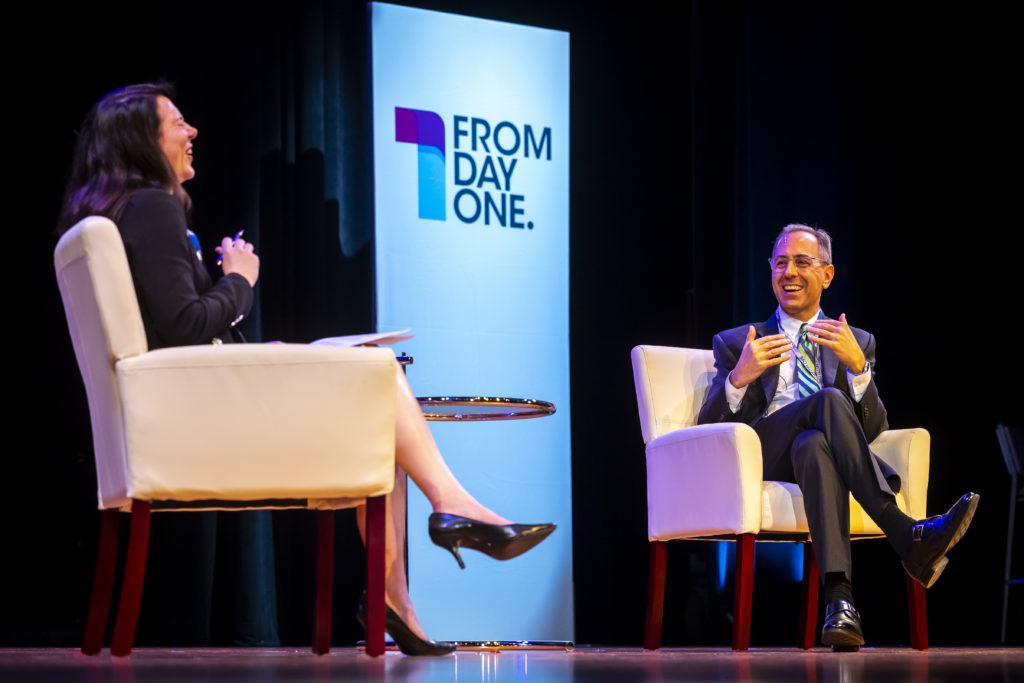
“Based upon anecdotal data, card swipes, and surveys, we were averaging about 80% occupancy in an office environment on any given workday, in any given month of the year,” Bramnick said. “The idea was to cut it in half, so we would be at roughly 40% occupancy.” But there were considerations the company had to monitor within this arrangement, such as offering enough guaranteed seats for those needed at the office.
Additionally, this required the company to take a hard look at workplace boundaries and maintain the same norms it had in place pre-pandemic, such as extending people the courtesy of not calling in the early or late evening hours unless absolutely necessary, not requiring everyone to have their cameras on at all times during video calls, and giving people working remotely the freedom to take an afternoon walk or a coffee break if that was part of their routine in the office.
“Managers had to be told, [if] somebody doesn’t answer the phone, they’re simply not at their desk and it’s no different than when they’re not at their desk at the office,” he said. “Similarly, [if] there are less than 12 people on a call, it’s suggested that you have your camera on, but if there are more than 12 people on the call, it’s polite to turn your camera on when you’re speaking but you don’t need it on all the time.”
When it comes to DEI initiatives, Bramnick said NRG Energy is still in the early stages of a process that it began in earnest over the last three years. To date, the company has encouraged people to share their preferred pronouns and conducted pay-equity surveys based on race and gender. It has also updated its company match policy on charitable donations, reducing its threshold from $25 to $10 to make it more accessible.
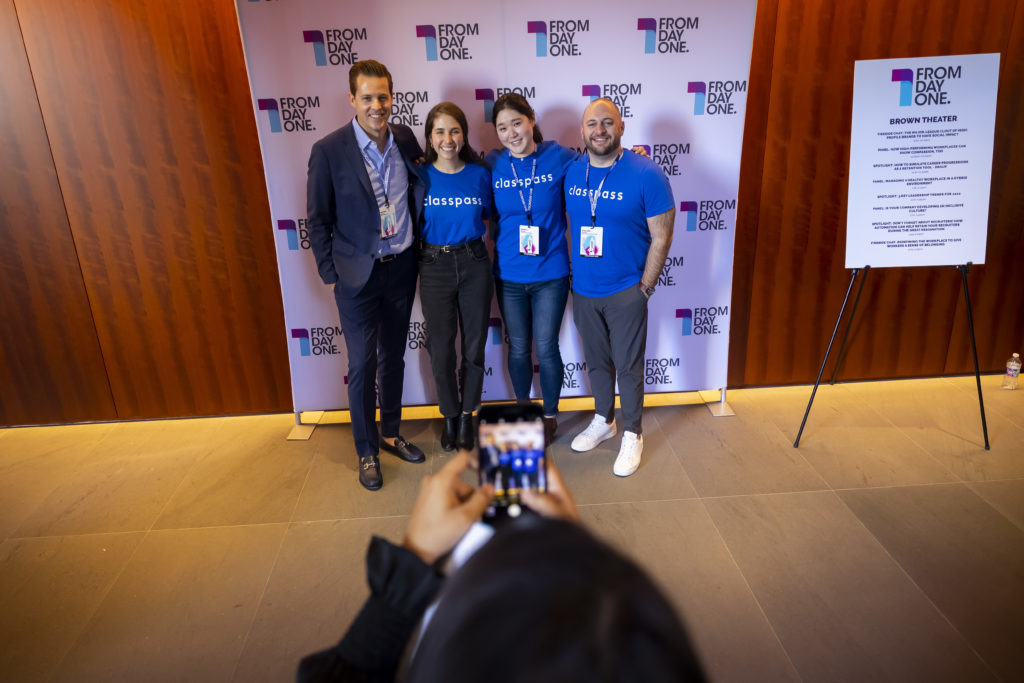
“We are working our way through this as we pivot to a hybrid work environment from a manage
The From Day One Newsletter is a monthly roundup of articles, features, and editorials on innovative ways for companies to forge stronger relationships with their employees, customers, and communities.